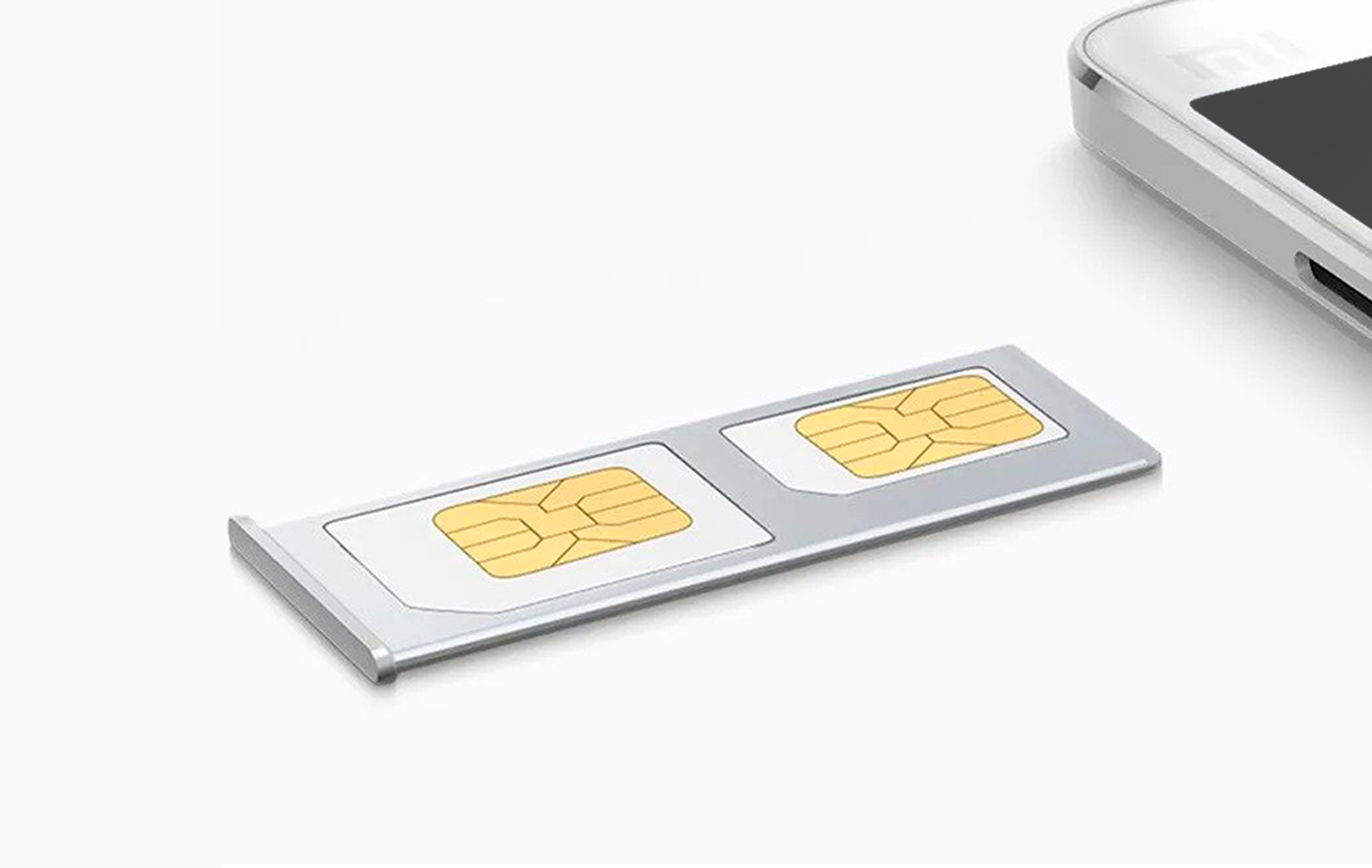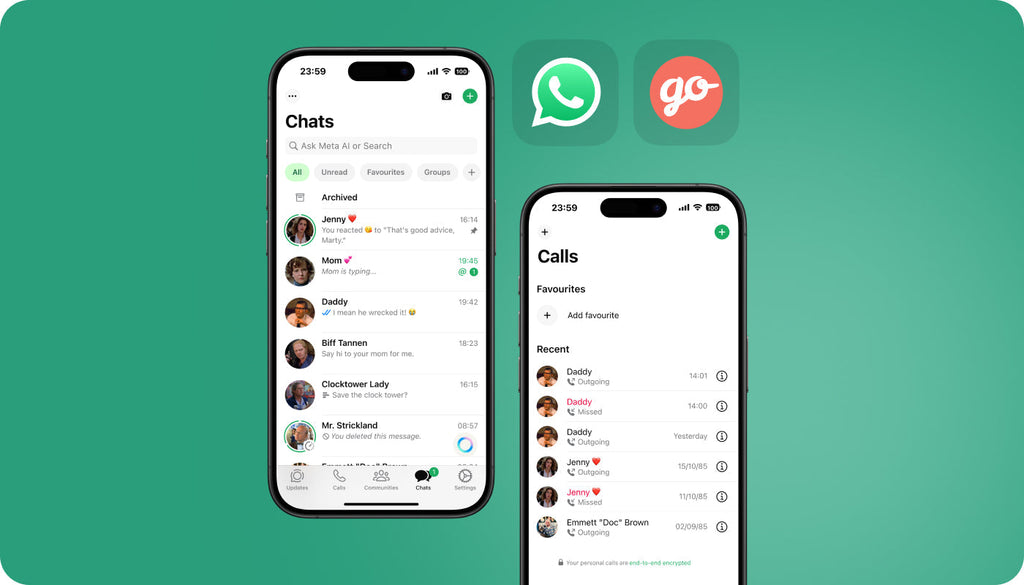Using Dual-SIM Phones with International SIM Cards for Travel
Do you have a dual-SIM phone or think about getting one? How can it be useful for travel? Vacationers can use such devices to stay connected globally without investing huge sums of money in the international connectivity. There are plenty of ways in which dual-SIM smartphones can be helpful. For example, you can put an international data SIM card in the second slot of your phone or use it together with a local SIM card of the destination country.
If you do not want to pay for roaming, then the following tips on using dual-SIM phones on your vacation will be of great help to you.
2. How Is a Dual-SIM Phone Useful for Travel?
3. Top Reasons for You to Start Using an Extra SIM Slot on Travel
4. Dual Active vs Dual Standby
6. Local SIM vs International Data SIM for the Second Phone Slot
7. What’s a Different Way to Use an International SIM Card?
Why Use a Dual-SIM Phone?
As a rule, people use dual-SIM phones for two main reasons:
- In countries where cellular providers offer free calls and texts between devices on the same network, people commonly install different SIM cards on their devices and switch between them depending on who they call.
- A dual-SIM smartphone is also useful for people who don’t want to carry a phone for work and a phone for personal matters. A dual-SIM device lets users have access to both numbers in a single smartphone.
When speaking about smartphone use for travel, a dual-SIM device lets you use a local SIM card along with an international data SIM card, without the need to worry about paying for roaming charges when you are away from home.
 |
Learn more about our products and plans |
| Check our plans |
Learn more about our products and plans |
 |
| Check our plans |
How Is a Dual-SIM Phone Useful for Travel?
Dual-SIM smartphones are especially useful for international travelers. With their help, you can stay connected when you are at home and on a trip to a foreign destination. You can buy a local SIM card from whatever country you are traveling in to make cheap local calls, send messages, and browse the web. Alternatively, you can drop an international SIM card into one of the slots of your device and retain your home SIM card in the other.

There is another way to use dual-SIM card smartphones on your travel. You can combine an international SIM card and a SIM card of the local connectivity provider of the country that you visit. In this case, an international data SIM card will be useful to you when you arrive in a foreign place and need to order a taxi or notify your Airbnb host about your arrival. A global SIM card automatically connects your device to a local cellular carrier. So, this is a really convenient connectivity solution for the first couple of days in a new place. If you are going to spend a week or more in a foreign country, then installing a local SIM card in the second slot of your device is a smart solution.
All dual-SIM smartphones let you set the purpose of how every SIM card in your device will be used. In the settings panel, you can set the default SIM card for texts and calls, and the SIM that will be responsible for global data consumption.
Doing so, you can avoid the issue faced by many travelers. You can stop paying high roaming charges and still use your phone to get in touch with family and friends while you are abroad.
Also, do not forget to disable roaming on your home SIM card. As long as you have it enabled, you will still continue receiving texts and calls to it, even if you set a different SIM card as default.
Top Reasons for You to Start Using an Extra SIM Slot on Travel
Frequent travelers have their own hacks on how to stay connected on a trip. Some people look for free public WiFi in the airport, cafe or somewhere on the street. This can be tricky and rather dangerous unless you know how to stay safe on free public Internet. Many others give preference to using dual-SIM smartphones - one slot for your home SIM and another one for an international data SIM card or a local SIM card of your travel destination.
If you are a frequent traveler and do not already have a dual-SIM smartphone, then the following list of reasons may convince you to adopt another SIM card slot before your next adventure.
- It’s convenient. If you travel frequently, then you know how frustrating switching between different SIM cards in a single device can be. When you travel with a dual-SIM smartphone, all it takes is to insert an international data SIM card into your device before going abroad.
- You can always get the best coverage. Is there anything more frustrating than having to deal with poor signal strength in 2019? Using a dual-SIM smartphone, you can get the best connectivity services that different carriers offer. Whenever you feel that your signal strength starts running low, you can change this situation by switching to your other SIM card. But, there is also the other side of the coin: You will will need to pay for two data plans. So, if you are willing to pay for it, you can have the best connectivity solution available.
- Don’t bother carrying two smartphones in your pocket. Using a dual-SIM you never have to worry about losing your second phone. You may forget about the fear that the battery life of your second device will run low the time when you need to make a call from the second line. A dual-SIM smartphone lets you switch between different lines with a single tap of a finger.
- All dual-SIM devices are unlocked. You can use any network that comes to your liking without any limitations. This leaves you free to see all the offers available in the market and choose the plans that match your requirements perfectly.
- Use the second SIM as a backup. In a situation when you find your phonebook empty because of a glitch, you can always find all the necessary contacts stored on your second SIM.
Dual Active vs Dual Standby
A few years ago, the major difference between dual-SIM smartphones was whether your device was dual standby (DSDS) or dual active (DSDA). DSDA smartphones can be active on a call and use data at the same time. On the other hand, DSDS devices only let one SIM card i be active at any given time.
This was an issue with earlier versions of smartphones that used older GSM and data networks. This meant that using one SIM card for a phone call prevented another one from using the 2G data. Modern-day LTE networks do not have the same restrictions.
Most of the present-day phone makers don’t bother with making extra hardware needed for dual-active support. The only thing that you need to remember when using a DSDS devices is that unless your carrier uses VoLTE, whenever you are on a call the second SIM card line will go directly to voicemail.
What About eSIM?
The embedded SIM technology (eSIM) is mainly popular among iOS devices. The technology became very popular with the latest Apple releases, like iPhone XR and iPhone XS. These two are the first dual-SIM smartphones that the company has ever released. Such phones have one physical SIM card slot coupled with an eSIM. The technology is not as popular in the Android world. However, embedded SIMs have been available in several Android devices for the last couple of years (e.g. Google Pixel 3).

Unlike physical SIM cards, eSIMs are integrated into smartphones and can be configured using virtual phone number applications. eSIMs don’t provide the same flexibility as physical slots. Carriers around the world are slow to support eSIM technology, with only a few international SIM providers currently offering prepaid service.
You can use an eSIM alongside with an international SIM card in your smartphone when you leave for vacation. When used together, both SIM cards can provide you with many opportunities to stay connected when you go abroad. This includes:
- Every time you come to a new country, get a local virtual number and keep an international data SIM card in your smartphone to make and receive phone calls.
- You can receive phone calls on your virtual phone number and use data internationally even when there is no WiFi connection.
- When you use a virtual phone number, your friends can avoid paying long-distance fees because your phone number isn’t assigned to any specific location.
- All incoming calls from your regular phone number are automatically forwarded to your phone. An international data SIM card lets you receive all important phone calls wherever you travel.
- Using an eSIM alongside with an international data SIM card lets you maintain privacy on your trip. You can provide your virtual phone number instead of the actual one during check-ins. This keeps your account private and lets you get in touch with the receptionist whenever needed.
 |
Learn more about our Lifetime Prepaid Data eSIM |
| Check our eSIM |
Learn more about our Lifetime Prepaid Data eSIM |
 |
| Check our eSIM |
Local SIM vs International Data SIM for the Second Phone Slot
Traveling with a dual SIM smartphone, you can choose what SIM to insert in the second slot of your device. Let’s assume that you keep your home SIM card in the first slot, with the roaming services being disabled for it. The second SIM card slot can be used for an international data SIM card or a local SIM card in the destination country (we’ve discussed how to travel with both these solutions in our earlier publication, check it out).

With that said, let’s decide whether a local SIM or an international data SIM card is best suited to be installed in the second SIM slot on your smartphone. To help you make the right choice, let’s compare the key features of both of these options in a table. As an example, take a local SIM card from Turkcell (Turkey) and a Keepgo Lifetime Data SIM for international travels).
| Local SIM Card (Turkcell) |
International Data SIM Card (Keepgo) |
|
|---|---|---|
| Coverage | 1 country | 100+ countries |
| SIM card validity | 6 months | Lifetime |
| Credit validity | 30 days | >1 year |
| SIM card cost | $23 | $49 |
| Minimal cost of a data refill plan | $33/8GB of data valid for 1 month | $3/100MB of data valid forever |
| Prepaid data | 200 minutes – 1000 sms and 20 GB data – valid for 30 days | 1GB of data – valid for 1 year |
| Local SIM Card (Turkcell) |
|
|---|---|
| Coverage | 1 country |
| SIM card validity | 6 months |
| Credit validity | 30 days |
| SIM card cost | $23 |
| Minimal cost of a data refill plan | $33/8GB of data valid for 1 month |
| Prepaid data | 200 minutes – 1000 sms and 20 GB data – valid for 30 days |
| International Data SIM Card (Keepgo) |
|
| Coverage | 100+ countries |
| SIM card validity | Lifetime |
| Credit validity | >1 year |
| SIM card cost | $49 |
| Minimal cost of a data refill plan | $3/100 MB of data valid forever |
| Prepaid data | 1 GB of data – valid for 1 year |
What’s a Different Way to Use an International SIM Card?
You can insert an international data SIM card in the second slot of your dual-SIM smartphone. This is a great choice for sole or business travelers. But, if you leave for vacation with your family and friends, you need to take care of their connectivity as well. This is when portable travel hotspots come into play.
You can insert an international data SIM card into a hotspot and carry it around with you on your trip. Basically, this is how Keepgo portable travel device works. It is shipped with a lifetime international data SIM card. All that it takes to start using the web abroad and sharing speedy connectivity with fellow travelers is:
- Making sure that the SIM card is inserted in your hotspot.
- Turning it on and starting to use the web on the run or sharing speedy connectivity with comrades.
Wrapup
Dual-SIM smartphones come in different variations. Some let you use two physical SIM cards, while others combine an embedded SIM technology with a physical SIM. Using the second SIM card slot in your phone can stop you from worrying about losing your home SIM card when you are on a vacation or always carrying another phone in your bag.
A dual-SIM phone is especially useful overseas. Simply drop in a prepaid international data SIM card in the second slot and use uninterrupted connectivity when you travel. Traveling with a global data SIM card is a win-win solution that will provide you with unthrottled connectivity every time you arrive in a new place. There is no reason to feel worried about your data validity as soon as you have the whole year to use data on your balance. Your SIM card won’t expire either, even if you spend a couple of years without using it. Simply refill your balance and leave for a new trip.




